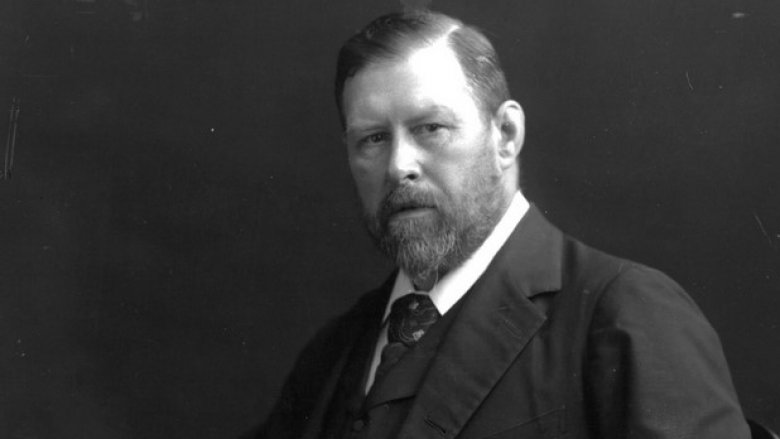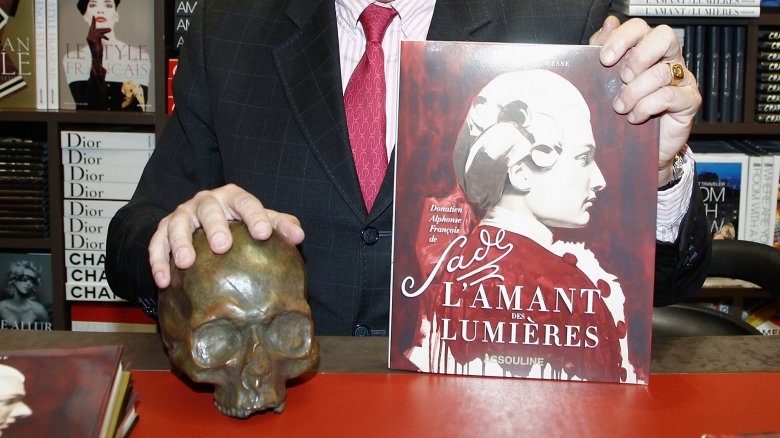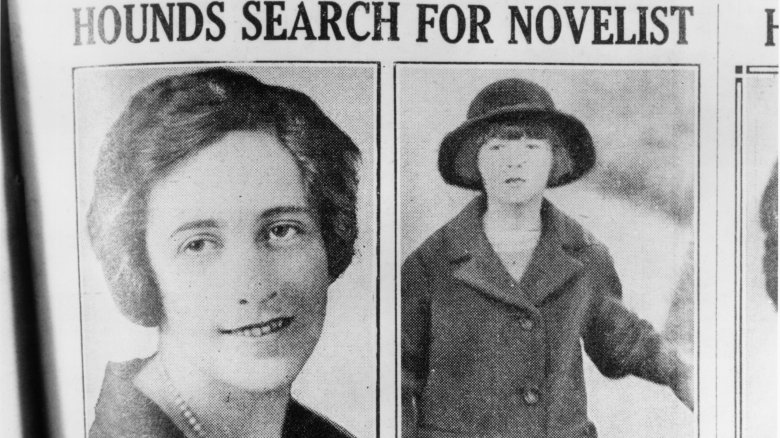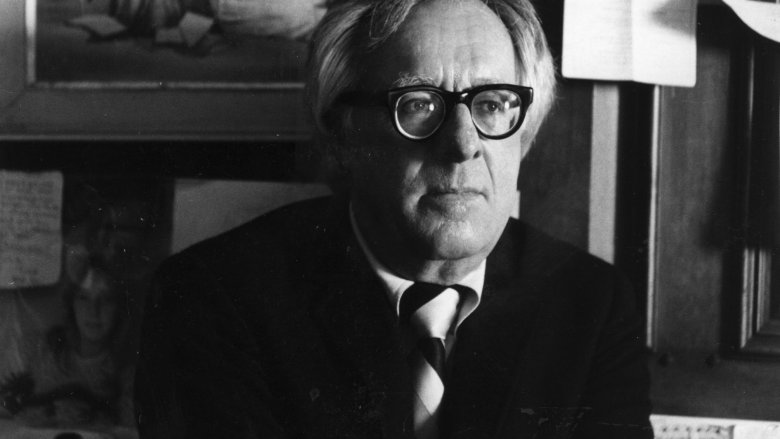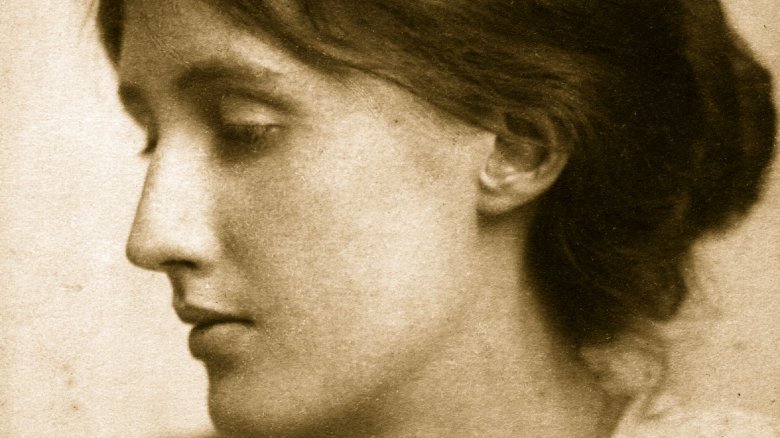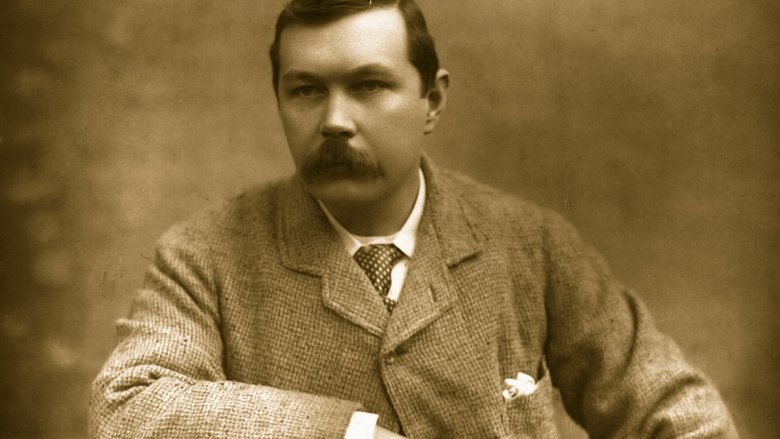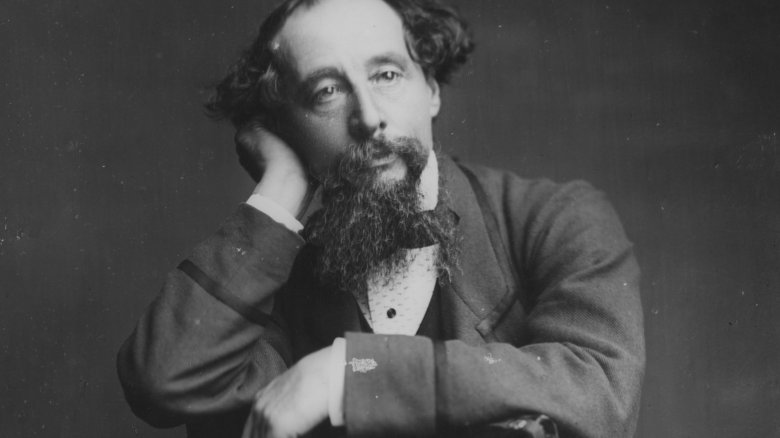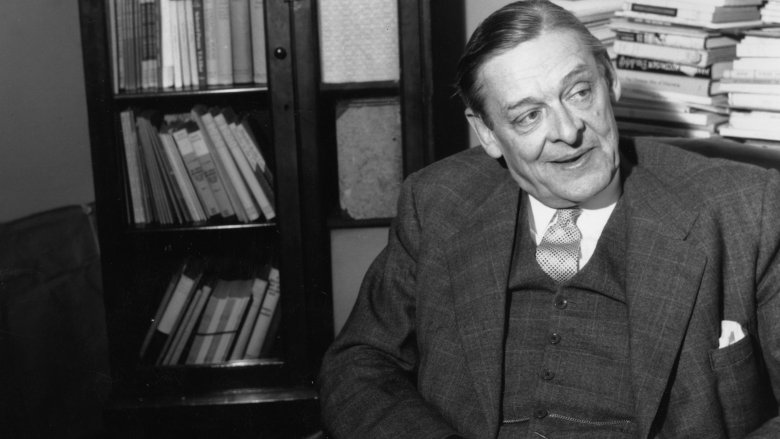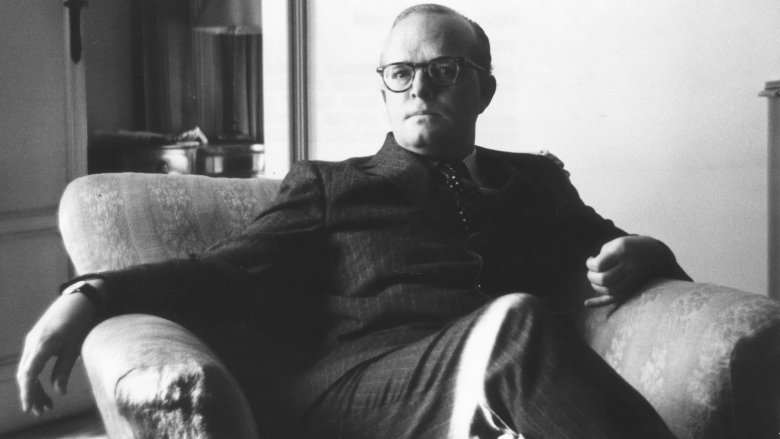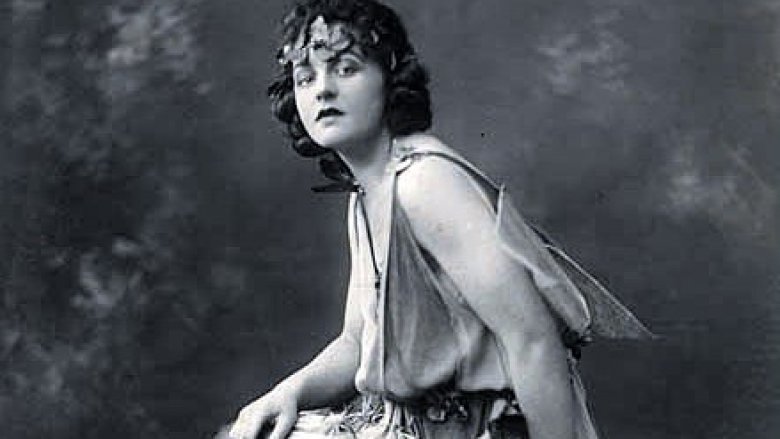Famous Authors Who Were Really Strange People
We may receive a commission on purchases made from links.
It's no secret that writers, as a species, are a little bit off. It takes a different sort of mind to spend so much time lost in imaginary worlds, and sometimes that strangeness comes out into everyday life. (Usually at the most inopportune moments.) That's especially true for the best and most famous authors, and it's often more than just the odd quirk or habit, like normal people have.
This is the stuff of hallucinations and visions, of a penchant for torture, obsessions that lead to the destruction of lives, and rather unhealthy fixations on the things no one else can see. These are the things that can make life an unbearable torment, things that get channeled out onto the page to create some of the most famous — or infamous — works of literature. Writers sometimes write to deal with their demons, but not all of them can be dealt with by writing alone. Sometimes, those demons find other ways to make their voices heard. These famous authors were pretty weird.
Bram Stoker: Royal conspiracy theorist
Bram Stoker is the father of the modern vampire, and he's most famous for Dracula. But he was also a massive conspiracy theorist, and he was absolutely convinced England's most famous queen was both an imposter and a man.
Stoker wrote Famous Imposters to detail his beliefs, and it starts with a reference to some mysterious secret mentioned in various historical accounts of Elizabeth's rule. Stoker says the secret is that the real Elizabeth died in childhood. When her governess was confronted with the task of telling her father, she decided to, well, not. Thinking the better course of action was just to substitute in a new child, she found the only appropriately aged one in the vicinity: a young boy.
Henry was a busy guy, glanced at the child, confirmed that yes, it's a kid, and moved on. The rest of Elizabeth's life — from her role as the Virgin Queen to her preference for heavy clothing and makeup that disguised her — was carefully concocted to hide the truth. Stoker absolutely believed it, a belief fortified by rumors that the young princess' body had actually been found some time in the 19th century, was reburied, and kick-started the tradition of dressing a boy in Elizabethan drag around May Day (via History Answers). Rumors still circulate today, so thanks, Mr. Stoker, for being weirdly concerned about what's under that dress.
The Marquis de Sade: Depravity, deviance, and a loving marriage
Everyone's heard of the Marquis de Sade, the writer who was more important to the release of 50 Shades of Grey than E.L. James. He wrote some of the most explicit stuff ever, so dark and depraved even scholars have a tough time getting through it. Sade was so controversial that his family buried his existence until the 1940s and France banned his works until 1957.
When researchers finally started digging into his life, they uncovered some pretty shocking incidents that help explain what kind of person he was. According to the Smithsonian, Sade died in an asylum in 1814, and what led to his imprisonment was pretty dark. The first incident historians found was one in 1763, when he imprisoned a prostitute and stomped on a crucifix while yelling a combination of blasphemies and orders to whip him. In 1768, he was the one doing the whipping, to a woman he doused with hot wax then paid to keep quiet.
The weirdest happened in Lacoste, where he, his staff, and his wife imprisoned five women and one man to — presumably — act out all his most depraved fantasies. Strangest of all is his relationship with that wife. Her name was Pelagie, and by all accounts they were involved in a mutually loving, caring relationship. He even called her his "celestial kitten." Cute, right?
Agatha Christie: Mysterious disappearance
Agatha Christie wrote some of the best mystery novels in literature, and one of her characters — Hercule Poirot — has the distinction of being the only fictional character to get an obituary in the New York Times. She's a fascinating person who did her best brainstorming while eating apples in the bathtub and who was the first Brit to learn how to surf standing up (via The Telegraph). Even stranger than these small oddities is her seemingly random 1926 disappearance.
According to History Extra, it was December 3 when she got up, kissed her daughter goodnight, then drove off. What followed was a massive bit of irony that put her square in the center of a mystery of her own, and hundreds of people (including more than a thousand police officers) were dispatched to find her. They had so little luck they even recruited two of Christie's contemporaries: Sir Arthur Conan Doyle and Dorothy L. Sayers.
There were a ton of rumors circulating, but the whole thing came to an end 11 days later when she was found in Harrogate. She claimed not to remember a thing, but investigators suspected whatever amnesia she had wasn't complete: She'd checked in to a hotel using the name of her husband's mistress. She never spoke about the incident but did divorce her cheating husband soon after.
Ray Bradbury: Technophobe
He's one of the most famous authors in science fiction, so you'd expect him to be fascinated with everything cutting-edge. There's nothing that's farther from the truth, and technology actually made him irrationally angry.
Bradbury gave an interview to Playboy in 1996 and discussed some of his pet hates. His fear of cars is understandable, as it started after he witnessed a gruesome accident when he was 16. After seeing the deaths of six people, he said it took him months before he could "function again." The fact so many people were killed in cars and "nobody seems to notice" was so difficult for him to wrap his head around that he eventually got over his fear of flying strictly so he could use cars less.
But that's nothing compared to his hatred of computers and the internet. After claiming computers are a lot of "flimflam," he went on to explain, "It doesn't give most people anything more [than] they already have. ... It's all meaningless." When the interviewer pointed out computers and the internet would give people access to an unprecedented amount of literature and information, he shut it down: "I have no time for that."
He didn't get any more open-minded, either. The Guardian says he only agreed to sell ebook rights to Fahrenheit 451 in 2011, when his publishers gave him no choice.
Virginia Woolf: Pacifism and blackface
Now, there's nothing strange about mental illness, and it's no secret Virginia Woolf suffered with it her entire life. Her doctors even pulled some of her teeth in hopes of pulling out the infection, and we know from her letters how less-than-thrilled she was about that. Her life was punctuated by major breakdowns and hallucinations that nearby birds were singing to her in Greek (via the Independent), and it's not so much weird as it is heartbreaking that she didn't get the treatment she needed.
But Woolf still managed to make a statement, like the time she and five friends got dressed up in robes, beards, and blackface, then headed out into London to humiliate the Royal Navy.
Masquerading as Abyssinian princes, the little group succeeded in getting a 45-minute tour of the pride of the British Navy: the HMS Dreadnought. To put this in perspective, that's kind of like someone in the 21st century sweet-talking their way into being allowed to take a spin in the Mars Rover by convincing NASA they're royalty from Atlantis. According to Atlas Obscura, it was — for Woolf, at least — not just a chance to humiliate the military, but to make her views as a pacifist well known.
Sir Arthur Conan Doyle: The mad spiritualist
Sherlock Holmes is undeniably brilliant, and the thing about writing brilliant characters is you've got to be pretty smart yourself to write them. Sir Arthur Conan Doyle certainly was that, but he was also obsessed with the occult and spiritualism to an insane degree.
According to Christopher Sandford, author of The Man Who Would Be Sherlock, he was likely primed to accept the idea of spiritualism as a legit science by his father, who was fond of sketching fairies and other little people. But mostly, his desire to believe in the spiritualism movement came from loss: Specifically, he lost at least 11 close family members (including his son and his brother) to the horrors of World War I. Understandably, he and others of his era wanted a way to contact them again.
Sherlock's creator went above and beyond, though, and became so immersed in the ideas of the occult that he ultimately alienated friends because of it. The most famous friend was Harry Houdini, who didn't believe any of it. Doyle attempted to sway his opinions by inviting him to a seance and contacting his mother, but when Houdini's non-English-speaking "mother" was suddenly able to communicate in English, Houdini ended the friendship (via Victorian Web). Meanwhile, Doyle continued to believe Houdini actually had supernatural powers.
Charles Dickens: Cannibalism and the morgue
Before the internet, MMOs, and Netflix, people had to make their own entertainment. Charles Dickens found his at the Paris morgue.
California State University professor Harry Stone says (via the LA Times) Dickens' fascination with the morgue went well beyond research. Stone says Dickens wrote extensively about what's called the "attraction of repulsion," and he spent so much time looking at the bodies he started to have nightmares and hallucinations about the dead. As if that's not creepy enough, Dickens was also obsessed with sketches and imagery of the living eating the dead. Stone collected more than 300 passages from Dickens' writing that dealt with cannibalism.
Dickens had a very real impact on morgue culture, as it was. In 1856, scandal broke out when members of the public discovered how the bodies of their dead loved ones were being treated — heaped into piles with others while waiting for burial. They turned to Dickens for help, and the BBC says he had a hand in creating a system where bodies were treated with respect and dignity instead of being tossed aside like empty, disposable husks.
T.S. Eliot: Cosmetics obsession
Anyone who's ever changed up their look and been told it's "just a phase" can totally relate to The Wasteland writer T.S. Eliot. He ended up giving himself such a bizarre makeover that his friends — including Virginia Woolf and poet Osbert Sitwell — wrote about his odd habit of coloring his face green.
The Yeats Eliot Review says Sitwell in particular was astonished that the notoriously private Eliot would go so far out of his way to color his face such a weird hue, when most of the time he wanted the exact opposite of attention. Clive Bell and Woolf's sister, Vanessa, discussed how it made him look "interesting and cadaverous," while Woolf herself felt weirded out enough that she needed to ask others if they saw the same green face she was seeing.
Around the same time, he insisted on being called "Captain Eliot." Why? While some of his friends suggested he wanted to make himself look as unhappy and tormented as a writer "should" be, others say it was likely to give himself a sort of supernatural aura appropriate to a poet. Whatever the reason, it apparently didn't really suit him.
Truman Capote: Maniacal superstitions
Over the course of his life, Truman Capote struggled with a series of superstitions that made life, well, difficult. He talked about it in a book he wrote himself, oddly called Truman Capote: Conversations, and described himself as "fantastically superstitious." Some had fallen by the wayside, but he still avoided doing much on the 13th of the month, he could be driven into a state of madness if a hat was left on a bed, and he never, ever put three cigarette butts into an ashtray.
The number 13 crops up again and again, and Capote also said he went through a phase of counting all his steps when walking anywhere. He'd jump every 13th one, even though he admitted it was "ridiculous."
He's also been quoted (via GoodReads) as saying he added up numbers — like the numbers of hotel rooms and phone numbers — and wouldn't have anything to do with a number that added up to 13. He wouldn't start or finish a project on a Friday, and wouldn't travel on a plane carrying two nuns. Perhaps all those superstitions had something to do with his other odd habit: carrying a security blanket. It's on display at the Monroe County Museum in Alabama, and it was made by his childhood nanny. He was almost never without it.
Philip K Dick: Visions of ancient Rome
Even those who haven't read him know of his work: Do Androids Dream of Electric Sheep? was turned into Blade Runner. Considerably less well known than Ridley Scott's classic movie is the fact Dick spent months having what he considered a life-changing religious experience.
It started after dental surgery in 1974. Dick was recovering when he started seeing flashes of lights that eventually morphed into visions of abstract paintings and engineering blueprints. Publishers Weekly says he became convinced the pink light he was seeing was allowing him to see some cosmic truth, and it was that the world around him was ancient Rome. People became members of the Roman military, walls became ancient stone, and so on. He didn't think he was going back in time, though, and instead became convinced that time had ended in 70 A.D. Everything since was an illusion most people were buying into, and he only had this information thanks to some three-eyed aliens that had told him the truth after traveling to him in those pink lights.
For his entire life, Dick suffered from experiences he called "divine madness," probably encouraged by the amphetamines he took constantly. He wrote extensively on his beliefs — check out his Exegesis, originally around 8,000 pages, in which he claimed to have been targeted by God, aliens, the KGB, and a mystic from the first century named Thomas.
PL Travers: Obsessively destroying children's lives
Saving Mr. Banks was a pretty shocking look at the prickly, hostile creator behind Mary Poppins, and like most movies, it left out something important.
Long before she became a famous author, Pamela Lyndon Travers was primarily raised by her aunts, and even though she grew up in Australia she was obsessed with Ireland. She inherited the obsession from her father, says New Statesman, and when she was old enough to set out on her own, she headed to the Emerald Isle. She fell in with Dublin's literature scene and met Yeats, but eventually settled in London.
Fast-forward through more travels and her first book, and Travers decided she wanted a child. And not just any child! An Irish one. She contacted a friend of Yeats who had acquired twin grandchildren he didn't want to raise himself. There was a catch, though: Her astrologer told her to take only one twin, so she did. She named him Camillus and never told him he was a twin. According to the Irish Examiner, Travers dealt with him by consulting mystics, gurus, sages, and arcane philosophies.
Camillus only found out about his brother when he was 17 and his twin showed up on his doorstep. The boys were devastated by their separation and a lifetime of being lied to, and both eventually became alcoholics and died young.

